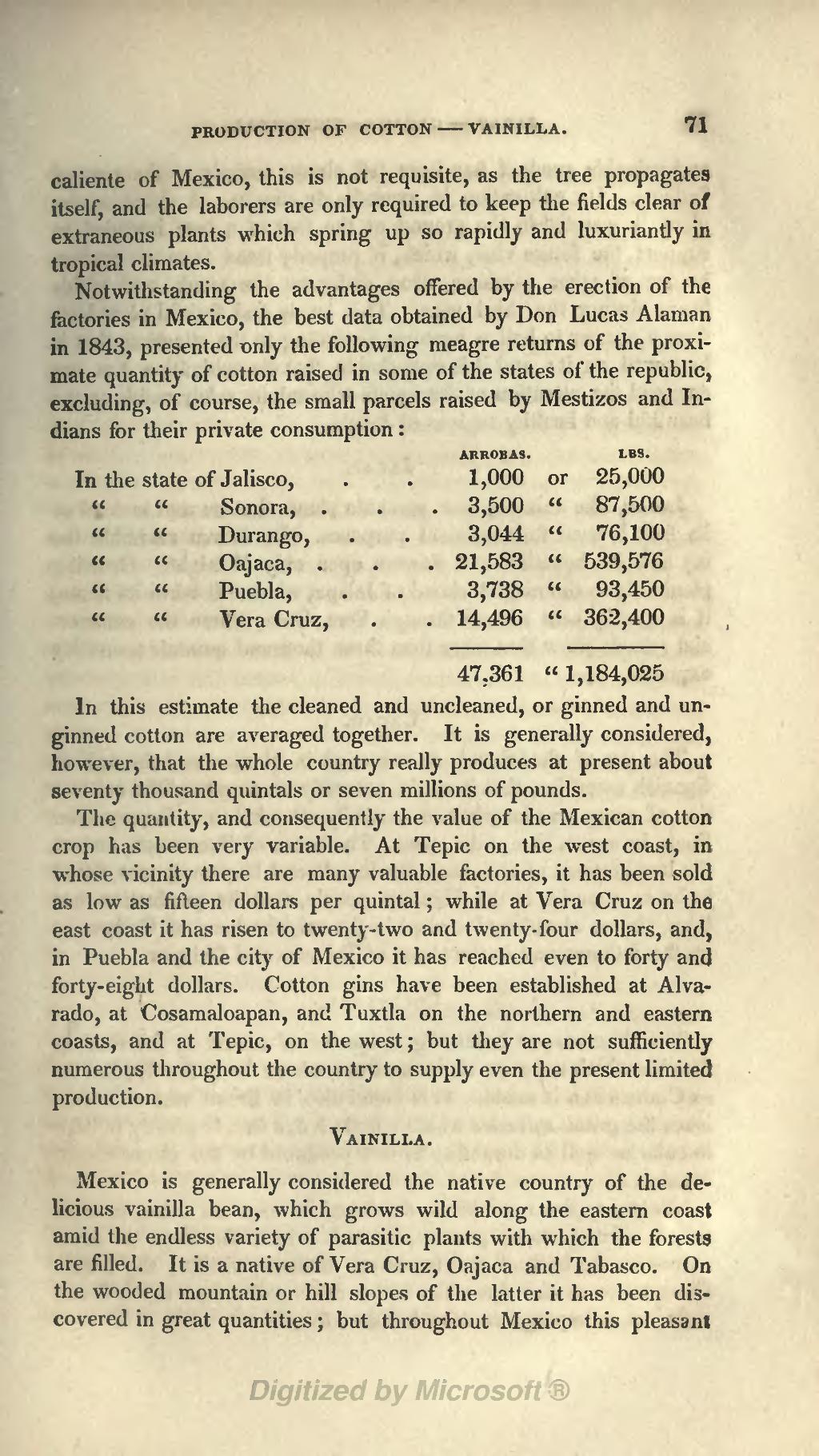caliente of Mexico, this is not requisite, as the tree propagates itself, and the laborers are only required to keep the fields clear of extraneous plants which spring up so rapidly and luxuriantly in tropical climates.
Notwithstanding the advantages offered by the erection of the factories in Mexico, the best data obtained by Don Lucas Alaman in 1843, presented only the following meagre returns of the proximate quantity of cotton raised in some of the states of the republic, excluding, of course, the small parcels raised by Mestizos and Indians for their private consumption:
| arrobas. | lbs. | ||
| In the State of Jalisco, | 1,000 | or | 25,000 |
| ""Sonora, | 3,500 | " | 87,500 |
| ""Durango, | 3,044 | " | 76,100 |
| "" Oajaca, | 21,583 | " | 539,576 |
| "" Puebla, | 3,738 | " | 93,450 |
| "" Vera Cruz, | 14,496 | " | 362,400 |
| ———— | ————— | ||
| 47.361 | " | 1,184,025 |
In this estimate the cleaned and uncleaned, or ginned and unginned cotton are averaged together. It is generally considered, however, that the whole country really produces at present about seventy thousand quintals or seven millions of pounds.
The quantity, and consequently the value of the Mexican cotton crop has been very variable. At Tepic on the west coast, in whose vicinity there are many valuable factories, it has been sold as low as fifteen dollars per quintal; while at Vera Cruz on the east coast it has risen to twenty-two and twenty-four dollars, and, in Puebla and the city of Mexico it has reached even to forty and forty-eight dollars. Cotton gins have been established at Alvarado, at Cosamaloapan, and Tuxtla on the northern and eastern coasts, and at Tepic, on the west; but they are not sufficiently numerous throughout the country to supply even the present limited production.
Vainilla.
Mexico is generally considered the native country of the delicious vainilla bean, which grows wild along the eastern coast amid the endless variety of parasitic plants with which the forests are filled. It is a native of Vera Cruz, Oajaca and Tabasco. On the wooded mountain or hill slopes of the latter it has been discovered in great quantities; but throughout Mexico this pleasant
